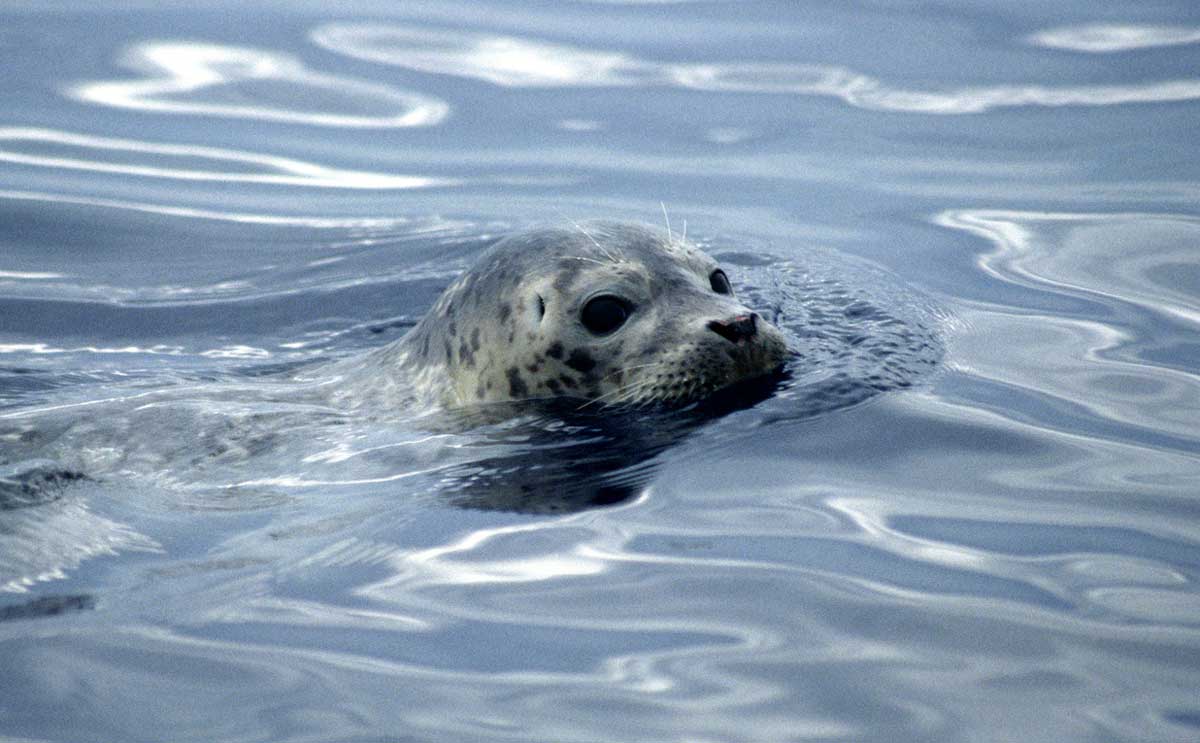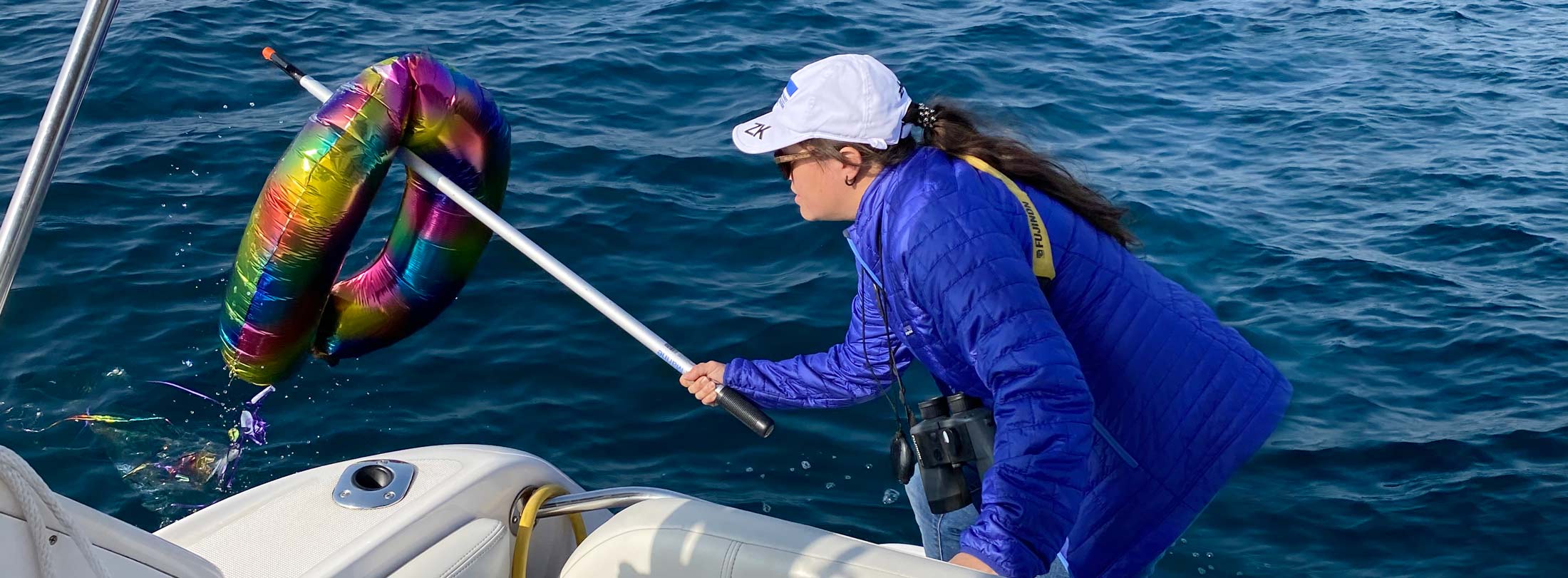
BE BALLOON AWARE!
Balloons can be deadly to wildlife, including marine mammals
When we release balloons into the sky to celebrate special occasions, we may forget that they eventually deflate and end up in streams, rivers, and the ocean. Balloons are among the top ten types of debris found during coastal cleanups, and their number appears to have tripled in the last decade.
Watch our Balloon Pollution video
Why are balloons so dangerous to marine life?
Entanglement
Like with fishing lines and nets, animals can become helplessly entangled in balloon strings, making them unable to swim, fly or move. Loss of mobility means animals cannot feed or effectively defend themselves from predators.
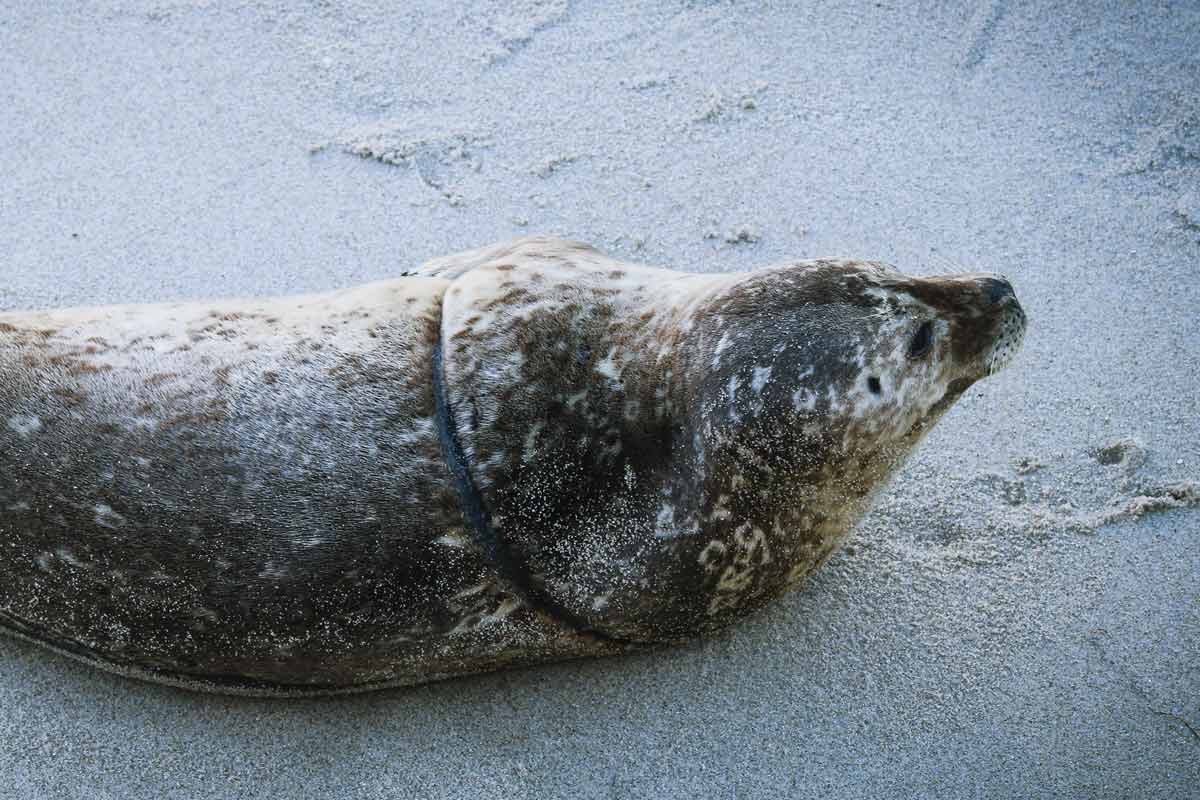
Starvation
Some animals die from starvation when balloons they’ve eaten block their digestive tracts. Several species of sea turtles and seabirds are particularly threatened by this type of pollution – even more than hard plastic – because balloons and balloon fragments are easily mistaken for food.

For seabirds, balloons are the #1 cause of death from marine debris-related risks.
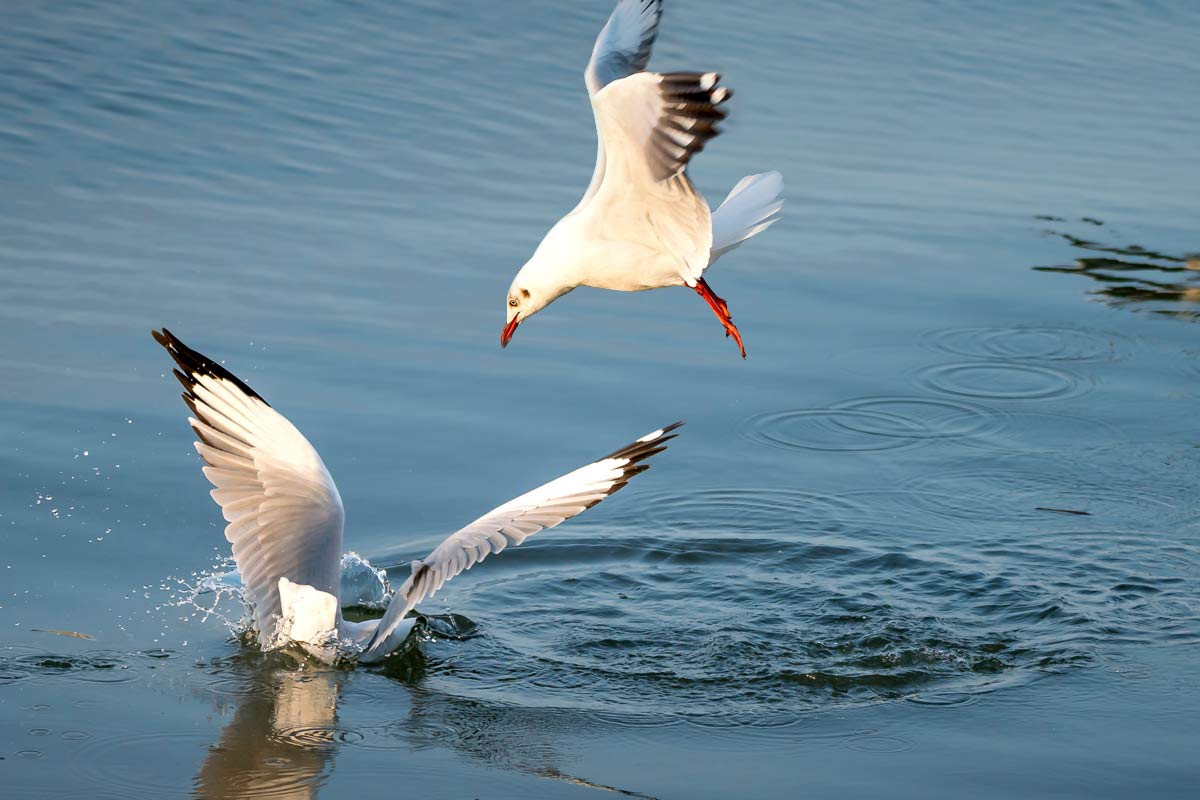
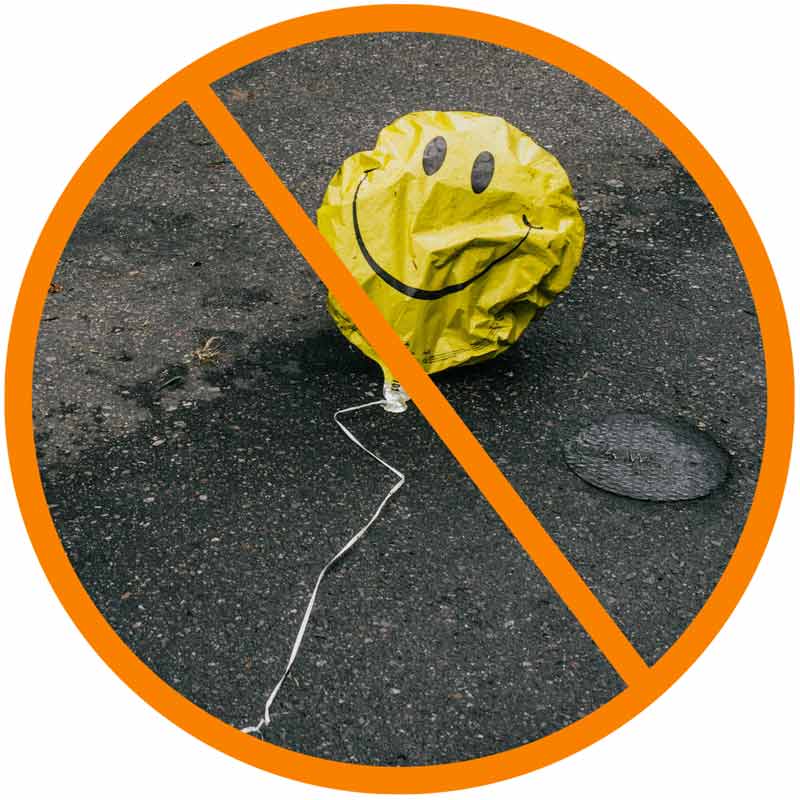
1,000,000s
of balloons are being intentionally released every year, despite balloon litter being 100% preventable
What are balloons made of?
MYLAR BALLOONS
Mylar is a transparent plastic/polyester resin. Foil (aluminum) is added to give the balloon a shiny, colorful finish. Sometimes, these balloons are referred to as “metalized”, meaning a thin layer of metal is added to the balloon for a glittery appearance. The plastics in mylar balloons never biodegrade – they only break down into smaller and smaller particles called microplastics, which can have an adverse effect on marine life.
Photo: Genghis (our OCS mascot dog) is wary of mylar balloon litter retrieved from the ocean during our balloon pollution research.
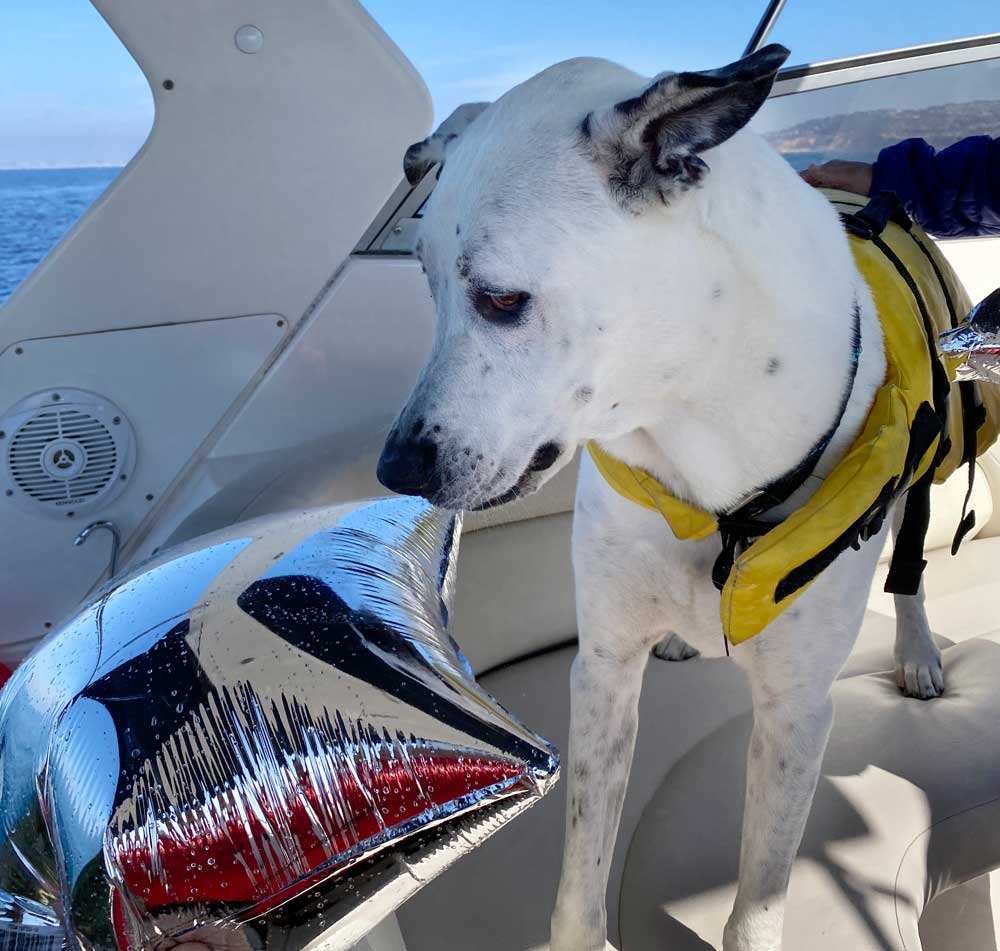
LATEX BALLOONS
Latex balloons are the most common type found in the stomach of dead animals. They are made from rubber treated with various chemicals to aid manufacturing and prevent their decomposition. Latex balloons are NOT considered eco-friendly and pose a serious risk to marine animals.

What current laws address balloon pollution?
It may be surprising to know there are regional, national, and international laws as well as local ordinances against releasing balloons, including fines if you are caught. Releasing balloons IS littering, and in California laws are in place because metallic balloons also cause dangerous power outages.
What can I do to help?
• If you find balloon litter in California, fill out our Be Balloon Aware Online Survey and help us collect scientific data to document the extent of this environmental problem. All you need to participate in the survey is a Google account, which you can sign up to for free.
• Make a financial contribution to directly support our pollution research and this educational campaign. Help defend wildlife from the threats that balloons pose!
• Take Action! See our tips on balloon alternatives, how to start beach cleanups, and other ways to get your community involved in fighting harmful balloon litter!
OCS SOLUTIONS
Research + awareness + action = meaningful change
Education leads to conservation
The Ocean Conservation Society Be Balloon Aware Campaign aims to raise awareness about plastic pollution – specifically balloons – and their direct effects on the environment and marine mammals we study.
In recent years, more public awareness of single-use plastics such as shopping bags and straws has led to a reduction in their use, on both personal and regional levels. Similarly, educating everyone about the dangers of balloons is a key step toward changing consumer choices and regulations about this often overlooked, deadly threat to marine wildlife.
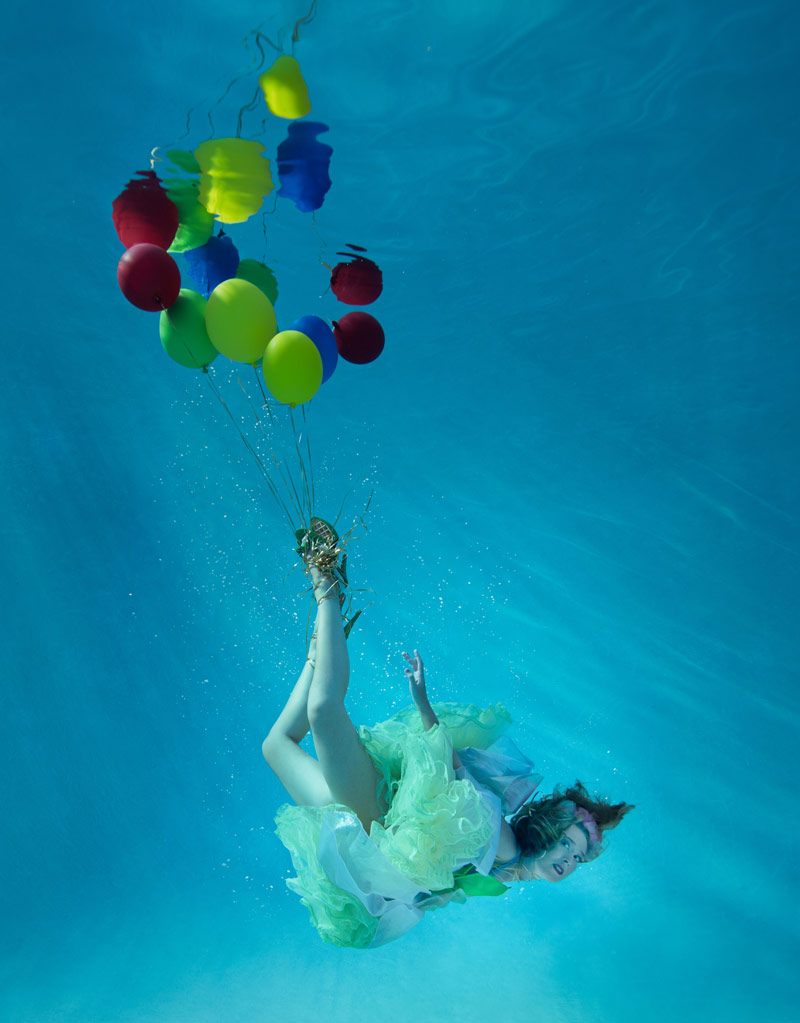
Model Linnea Snyderman shot by Brett Stanley for the Be Balloon Aware Campaign
TAKE ACTION!
Contribute to our balloon pollution research!
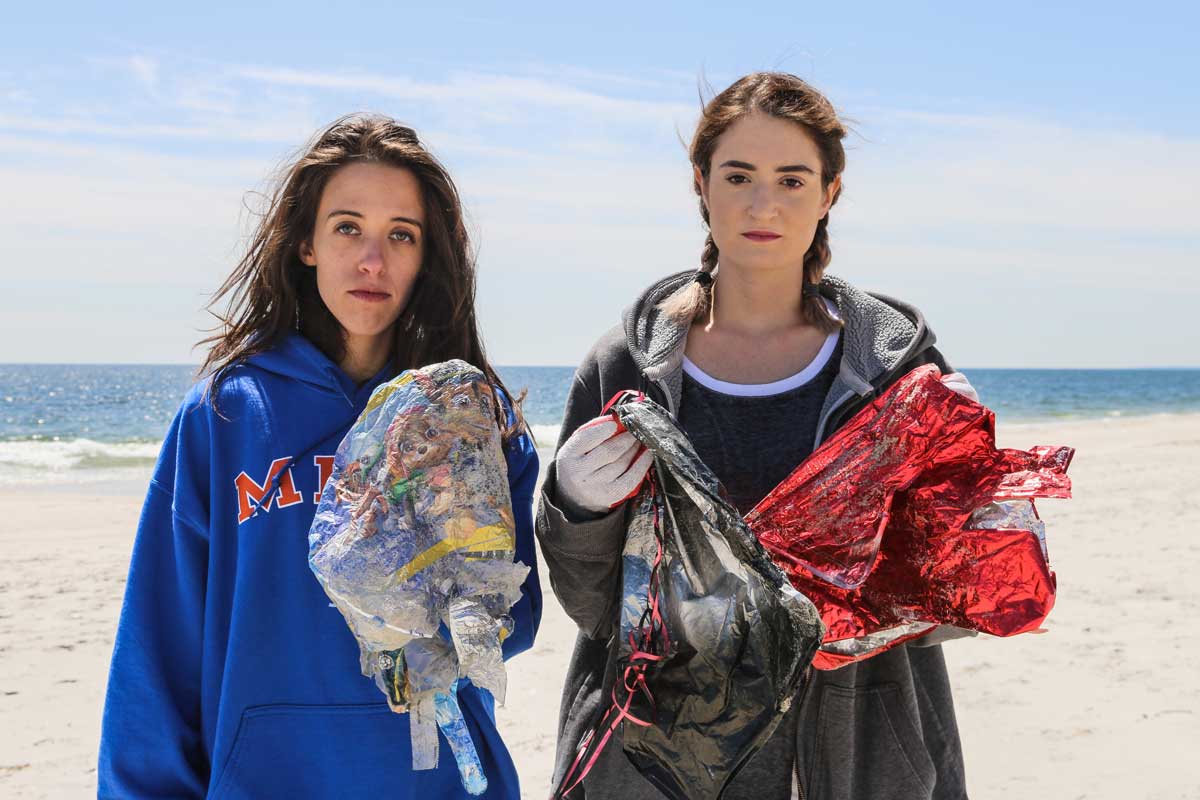
image: @wildlife_by_yuri
Releasing balloons during happy occasions has devastating impacts on marine life. If you find balloon pollution anywhere in California, fill out our Be Balloon Aware Online Survey – all you need is a free Google account to participate. Your data contribution can help change regulations to better protect marine mammals and other wildlife!
Deflate our dependence on balloons to protect marine animals!
Use balloon alternatives
Flags, kites, pinwheels, ribbon dancers, banners, lighting candles and luminaries, tissue paper pompoms are all reusable and can help eliminate balloon pollution!
Learn more about marine debris
Visit NOAA’s Marine Debris Program to learn more on a regional, national, and international scale.
Participate in trash clean-ups
Even if you don’t live near the beach, trash flows down-stream and can eventually end up in rivers and the ocean. Search online to see what clean-up programs you can join in your area.
Host your own community clean-up
No matter where you live, organizing a local clean-up is easy and strengthens your community connections. Explore some useful, how-to tips from NOAA’s Marine Debris Program.
Write a personalized letter
Let your city, state and federal representatives know what you think about the threats balloons pose to marine life in your area!
Share your knowledge!
Share this campaign on social media and educate your family & friends about balloon pollution and its harmful effects on wildlife. Your voice can be a powerful tool for creating positive change!
100,000+
marine mammals die each year from plastic debris
OCS Balloon Pollution Research
In addition to the Be Balloon Aware education campaign, our research team has also begun collecting balloon trash found on the surface of the ocean during our marine mammal surveys.
Data we collect include: date and location of balloon debris, number and type of balloons, sea conditions and presence of injured wildlife.
The ultimate goal of our balloon pollution research is to affect change in regulations regarding the use of balloons to help defend the well-being of the magnificent marine mammals we share our planet with.
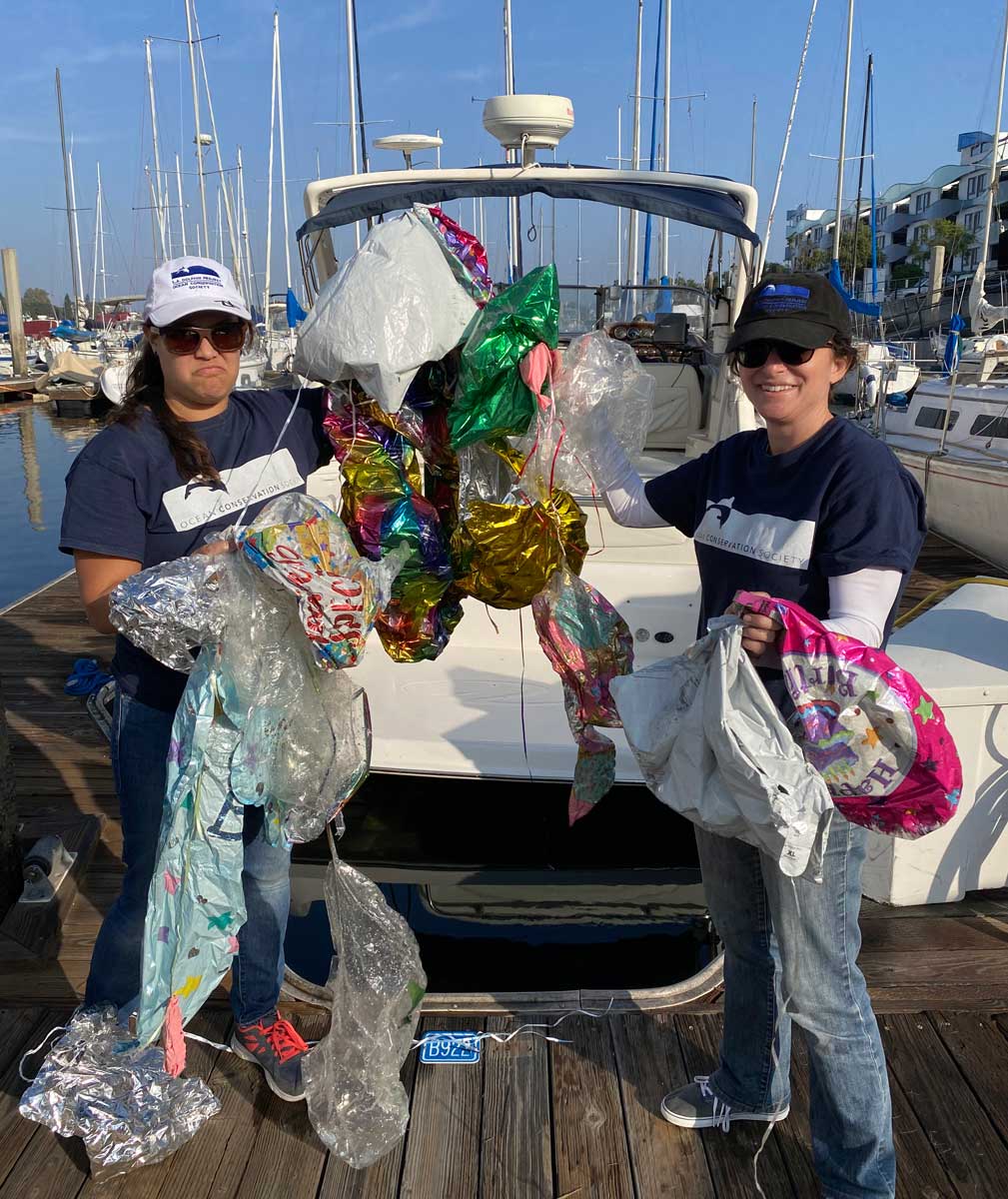
END BALLOON LITTER!
Help fund balloon pollution studies to protect marine mammals
Your tax-deductible donation directly helps OCS continue our on-the-water research to document the scope of this problem, facilitating to shape future policies aimed to eliminate harmful balloon litter. We also seek funding to expand this Be Balloon Aware educational campaign via social and other media. Defend marine species you love. Help us put an end to balloon pollution!
